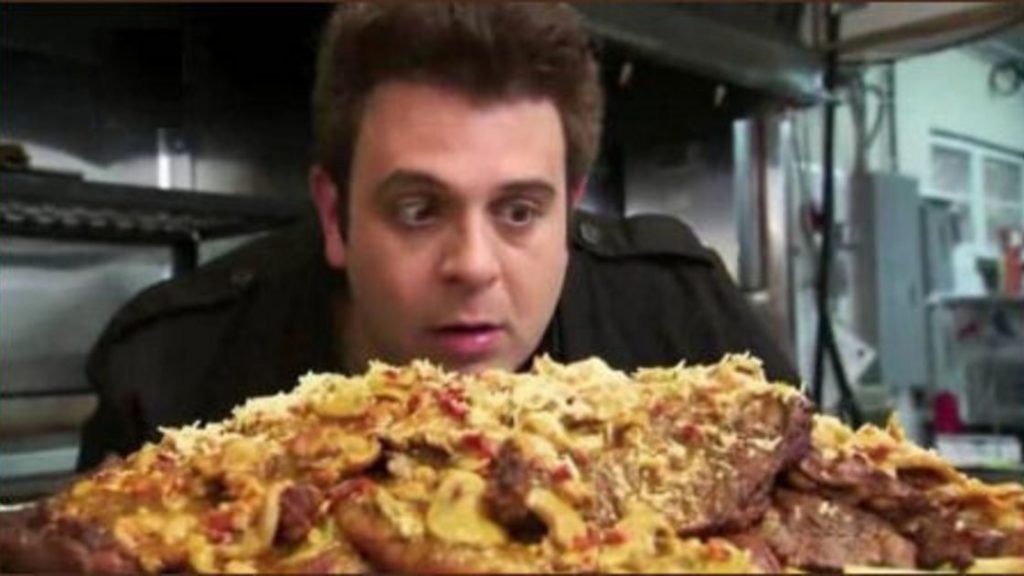
Man vs. Food and the The American Dream
I recently watched an episode of Man vs. Food on one of those nondescript channels that populate the badlands between the post-lad hangover zone of BBC and the less salubrious members of the C4 family and the outer limits of the tragi-comic late night masturbatory purgatory of the Babestations and Rabbit Chats, where dead-eyed women mentally compiling the shopping list for tomorrow’s ASDA run unrhythmical vibrate their spray-tanned buttocks. For those who don’t know Man vs. Food, it is a programme where Adam Richmond takes on ‘big food’ at a variety of local restaurants across the US.
In each programme he meets local chefs who claim to cook the best ribs, the juiciest burger, the spiciest wings. The central set piece of each episode sees Richmond take on an eating challenge at a restaurant in the faceless middle-American town that that episode finds him in. ‘Can Adam defeat the Lamesa, Texas, 25-pound steak challenge?’ ‘Will Adam conquer the Mason Falls, Iowa King Crab Carnivale?’ ‘Is the Sedalia, Missouri Hog-Roast-for-one a Pig too Far?’. Invariably the answer is always ‘yes’ (or no, in the case of the last announcer VO-ed cliffhanger question), this man can conquer this food. At first, I was disgusted by the whole concept, but then I was hooked. We watch spectators watch this man in a restaurant take on a week’s calories in one sitting, transfixed by the site of enough food to feed a family somewhere else for a week is crammed into the gaping pie-hole of one fat American travelling cook. The visceral nature of the whole spectacle, the sense of theatre, the element of dramatic set piece (Will He?- but of course he will) makes the whole thing oddly beautiful, and you find yourself urging him on with every mouthful, despite the victory over food being a foregone conclusion.
But it began to dawn on me that actually was what made it so beautiful is that in many ways it was a renewal of the American Dream, that it was a new covenant that reconnected contemporary America with its pioneer spirit, with its past, with its founding fathers. The sheer wastefulness of the task celebrated the country as a land of plenty, as the ‘big country’, as this vast set of possibilities. The idea that this man was taking in the food represented those who are brave enough to grab that opportunity to take on that surfeit of goodness, of stuff. The ordinariness of the man who is to conquer this food shows how this is available to us all, how we could all make it in America- there is the space the possibility for anybody to become whatever somebody they want to be as Fitzgerald’s Nick Carraway says of the embodiment of the same dream gone astray in the mid 2oth century ‘Jay Gatsby…sprang from his Platonic conception of himself. He was a son of God—a phrase which, if it means anything, means just that—and he must be about His Father’s business, the service of a vast, vulgar, and meretricious beauty.’ Man vs. Food renews the great American possibility of self-creation, re-invention- it represents that blank canvas loaded with opportunity with every oversized steak-knife and giant ersatz-silver salver. In watching this one man over-stuff himself on deep-fried goodness we are seeing a return to everything that once-made America great, a post-MTV rearticulation of ‘The New Colossus’, incribed on the plinth of Liberty, with every bite
Category: culture